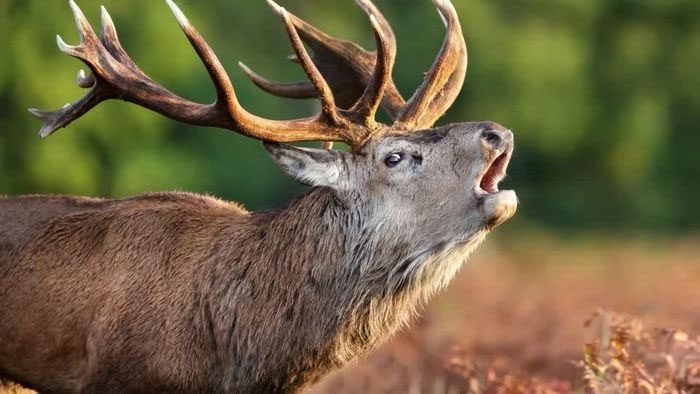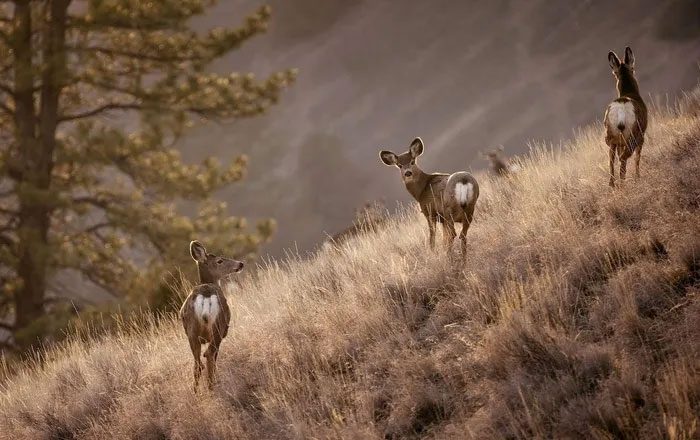The outbreak of Chronic Wasting Disease (CWD) among deer in the U.S. raises concerns that this disease could impact human health.
In the vast, serene forests and grasslands of North America, a disease is quietly developing, causing widespread concern. This disease is known as Chronic Wasting Disease (CWD), also referred to as zombie deer disease.
This illness is stealthily spreading among deer populations in the region, alarming scientists, conservationists, and the general public.

Symptoms of deer infected with CWD include weight loss, unsteady movement, dull eyes, and drooling. (Photo: Newsweek).
What is Zombie Deer Disease?
According to The Conversation, zombie deer disease (referred to in English as zombie deer disease) is a neurological disorder affecting species such as deer, elk, and moose found in areas like Canada, the U.S., Norway, and South Korea.
The U.S. Centers for Disease Control and Prevention (CDC) states that infected animals may take over a year to show symptoms. Common symptoms include weight loss, unsteady movement, dull eyes, drooling, or even falling into a coma.
Currently, CWD affects animals of all ages. Some infected animals may die without ever displaying symptoms. Modern medicine has yet to develop a vaccine or treatment for this mysterious disease.
According to the Animal and Plant Health Inspection Service of the U.S. Department of Agriculture, although it is an infectious disease, the cause of zombie deer disease is neither a virus nor a bacterium.
Scientists believe that prions are misfolded proteins that cause normal proteins in the brain to misfold as well, leading to neurodegeneration.
Prions raise concerns among scientists because they possess strong resilience and can remain viable for many years. Notably, they can withstand toxic formaldehyde, radiation, and extreme temperatures.

Scientists worry that humans could contract CWD since deer are still widely hunted for meat. (Photo: BC Wildlife Federation).
Can Humans Contract CWD?
The CDC estimates that in areas where prion diseases are prevalent, the infection rate ranges from 10-25%. In 2023, surveillance results from Alberta, Canada, indicated a 23% positivity rate among mule deer, according to the BBC.
The spread of CWD among wildlife poses significant ecological and human health risks. Currently, there is no evidence proving that CWD can directly infect humans, but scientists are concerned that this is a possibility.
First, studies indicate that the prions causing zombie deer disease can infect and “replicate” in human cells in a laboratory environment. This has raised alarm regarding potential transmission risks.
Second, humans may be at risk of exposure to CWD-infected animals when hunting and consuming their meat.
A report published in the National Library of Medicine in 2019 revealed that in 2017 alone, Americans consumed approximately 7,000-15,000 CWD-infected animals, with an annual increase forecasted at 20%.
In areas with high CWD infection rates, such as Wisconsin, thousands of people may have unintentionally consumed meat from infected deer. Reducing the risk of disease transmission to humans will be challenging due to the large number of people consuming venison.
Prion diseases, such as Creutzfeldt-Jakob disease in humans and bovine spongiform encephalopathy in cattle, have demonstrated that epidemics can cross species barriers and leave devastating consequences.
For example, the outbreak of bovine spongiform encephalopathy in the UK in 1995 led to the deaths of millions of cattle and nearly 200 human fatalities due to the disease’s variant.
Moreover, the challenges associated with detecting and diagnosing prions in humans complicate the situation further.
Unlike typical infectious agents, prions do not trigger an immune response, making them difficult to detect with current scientific tools.
The potential impact of CWD on human health is not limited to direct transmission. The long-term persistence of prions in the environment means that humans could also be exposed through indirect pathways such as contaminated soil, water, and other environmental sources.
In addition to immediate health concerns, the spread of CWD poses significant ecological and economic risks.
Deer hunting is not only a popular recreational activity, but it also serves as an important food source and livelihood for many communities.
The rise of CWD threatens to disrupt this delicate balance, potentially diminishing deer populations and affecting food security in affected areas.
The ecological impacts of CWD extend beyond deer populations, affecting entire ecosystems.
Specifically, deer play a crucial role in shaping plant communities, influencing vegetation growth and change through grazing.
Once deer populations decline, plant communities and soil health will be impacted. Wildlife species that prey on deer will also be affected.


















































